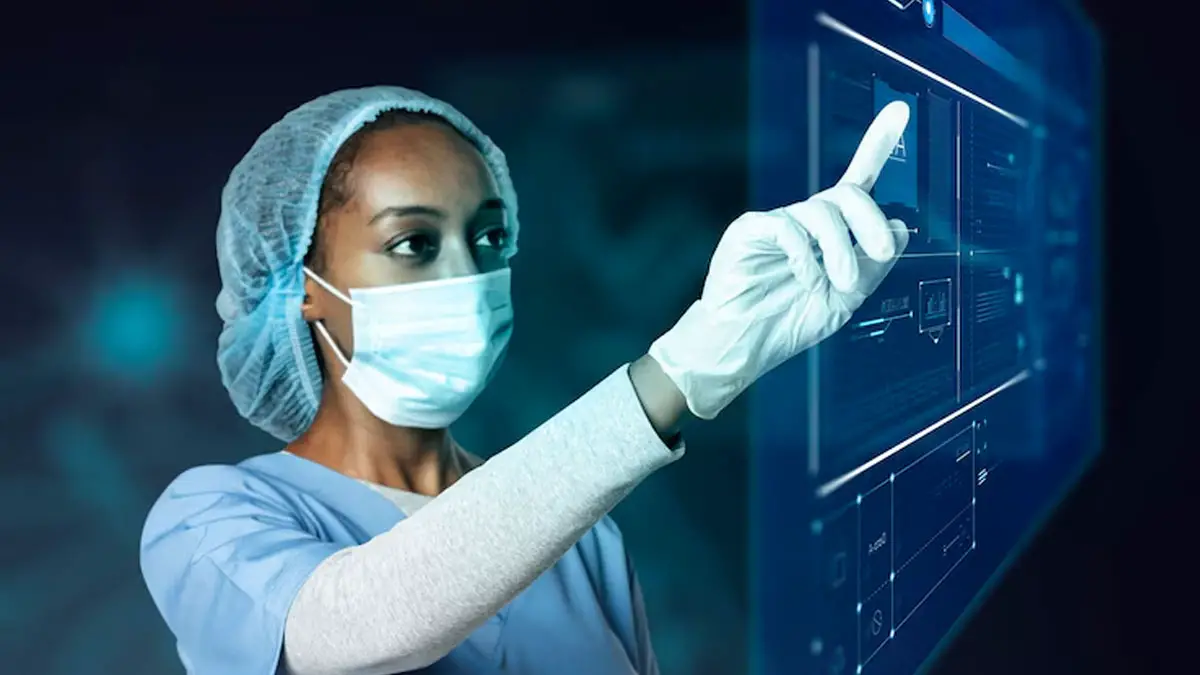In a groundbreaking leap for medical technology, Microsoft has unveiled a new artificial intelligence tool that significantly outperforms human physicians in diagnosing complex medical conditions. Called the Microsoft AI Diagnostic Orchestrator (MAI-DxO), this innovative system has shown diagnostic accuracy that is more than four times higher than that of seasoned doctors, marking a pivotal moment in the integration of AI into healthcare.
Microsoft’s MAI-DxO is not just another algorithm—it’s an entire virtual medical team, built with next-generation AI capabilities. In benchmark trials using cases from the New England Journal of Medicine, one of the most prestigious clinical journals in the world, MAI-DxO demonstrated an 85.5% accuracy rate, compared to just 20% by a panel of experienced physicians.
Let’s explore how this AI system works, why its results matter, and what this means for the future of global healthcare.
📊 Microsoft MAI-DxO: Beating Human Doctors by a Wide Margin
The medical community often deals with highly complex cases, particularly those published in the New England Journal of Medicine (NEJM). These cases often involve rare diseases, overlapping symptoms, and challenging diagnostic puzzles that typically demand input from multiple specialists and extended testing. It’s in this environment—where even elite doctors can struggle—that Microsoft’s MAI-DxO has proven its incredible potential.
In a recent evaluation, Microsoft ran the AI through 304 NEJM cases—real-world, peer-reviewed case studies that are known for their difficulty. The AI correctly diagnosed 85.5% of these complex medical problems.
In stark contrast, the human control group—comprising experienced physicians—scored just 20% accuracy when asked to solve the same cases without access to resources, such as textbooks, diagnostic tools, or consultations with colleagues.
While the lack of tools does limit the realism of the physician evaluation, the test was intended to compare internal reasoning and deductive capabilities. Even with these caveats, the scale of the AI’s success is impossible to ignore.
🤖 How MAI-DxO Works: AI That Mimics a Panel of Doctors
MAI-DxO is more than a single AI model—it’s an intelligent system of five specialized AI agents, each simulating the role of a different type of doctor in a collaborative environment.
Here’s how the system is structured:
- Agent 1: Hypothesis generation – acts like a diagnostician reviewing symptoms.
- Agent 2: Test selection – identifies what diagnostic tests should be ordered.
- Agent 3: Results interpretation – evaluates lab or imaging results.
- Agent 4: Differential analysis – weighs possible diagnoses against each other.
- Agent 5: Treatment planning – proposes next steps based on the diagnosis.
This group dynamic closely mimics a real-life hospital scenario, where teams of doctors from various specialties work together to tackle difficult cases. The agents communicate using a method Microsoft calls “chain of debate”, where each step is discussed and refined collectively before arriving at a final decision.
This collaborative AI model mirrors the complexity of human thought, but with much greater speed, memory, and data integration.
🌐 A Multi-Model Powerhouse: AI Agents From the Best
Another standout feature of MAI-DxO is its use of multiple large language models (LLMs)—not just one from Microsoft. To maximize the system’s power, Microsoft incorporated LLMs from a diverse range of leading AI companies, including:
- OpenAI
- Meta
- Anthropic
- Google DeepMind
- xAI (Elon Musk’s AI firm)
- DeepSeek
By leveraging multiple LLMs with different strengths and training data, MAI-DxO is able to simulate group reasoning, improving decision-making accuracy through internal debate and consensus—just like a team of doctors would.
🧠 The Man Behind the Vision: Mustafa Suleyman
The project has been driven forward by Mustafa Suleyman, co-founder of DeepMind and now head of Microsoft’s AI health division. Suleyman has long advocated for the use of AI in solving large-scale human problems, and he views MAI-DxO as a foundational step toward what he calls “medical superintelligence.”
In an interview with the Financial Times, Suleyman stated that tools like MAI-DxO could drastically lighten the load on medical professionals while improving patient outcomes.
“This is not about replacing doctors. It’s about helping them solve the hardest problems faster and more accurately,” Suleyman explained.
💡 Why This Matters: A Global Healthcare Transformation
Healthcare systems around the world are under enormous strain:
- Physician shortages
- Long wait times for diagnostics
- Overwhelmed emergency rooms
- Expensive medical procedures
The potential for an AI system that can accurately diagnose complex cases, especially in under-resourced environments, could be transformational.
Key benefits of AI-powered diagnosis:
- ⚡ Faster decision-making: Reduces delays in treatment
- 🧾 Lower costs: Minimizes unnecessary testing and hospital stays
- 📈 Improved outcomes: More accurate diagnoses = more effective treatments
- 🌍 Global accessibility: Can be used in remote or underserved regions
With advanced AI, a rural clinic without access to specialists could still receive world-class diagnostic support.
⚠️ The Limitations: Why It’s Not Ready for Clinics Yet
Despite its incredible performance in test environments, MAI-DxO is not ready for real-world clinical use just yet. Microsoft itself acknowledges that much more testing is required to ensure patient safety and regulatory compliance.
Key caveats to consider:
- ❗ Unrealistic testing conditions: Doctors were not allowed to use reference materials during the benchmark test.
- 🧪 Limited validation: The system has not yet been tested in live patient scenarios.
- 🛡️ Regulatory hurdles: Medical AI must meet strict safety and ethical standards before widespread use.
- 👥 Human-AI interaction: AI should support, not override, human clinical judgment.
To address these challenges, Microsoft is partnering with hospitals, universities, and healthcare systems worldwide to carry out real-world validation studies. These will determine whether the AI’s stellar test performance can translate into safe, effective use in daily clinical settings.
🔄 AI as a Partner, Not a Replacement
The goal of MAI-DxO—and medical AI more broadly—is not to replace human doctors, but to enhance their abilities. Physicians bring something no AI can replicate: empathy, intuition, ethical judgment, and hands-on experience.
The optimal future of medicine likely lies in a collaborative model:
- 🤝 AI handles data-heavy pattern recognition
- 🧍♂️ Doctors handle patient interaction, context, and decision-making
Just as modern physicians use X-rays and MRI machines to enhance their capabilities, AI will become another essential tool in the medical arsenal.
🧬 What’s Next: The Road to Medical Superintelligence
Microsoft’s MAI-DxO is just the beginning of what’s being called the “AI-first era of medicine.” Over the next few years, expect to see:
- 🔬 AI-integrated diagnostic systems in hospitals
- 📱 Mobile apps powered by AI for frontline diagnosis
- 🧠 Personalized treatment plans created by multimodal AI systems
- 🌐 Global health equity improvements driven by accessible AI
Suleyman envisions a world where AI doctors are available to anyone, anywhere, anytime, providing accurate, empathetic support without replacing the human touch.
📉 The Broader Impact: What Other Companies Are Doing
Microsoft isn’t the only tech giant investing heavily in AI healthcare:
- Google DeepMind’s Med-PaLM has shown promising results in medical Q&A.
- IBM Watson Health, although restructured, was a pioneer in this space.
- Amazon is developing AI for pharmacy services and wearable diagnostics.
- OpenAI, with GPT-4o, is showing high multimodal potential in medical data analysis.
But Microsoft’s approach—particularly its multi-agent system and multi-model architecture—may give it a unique advantage in real-world implementation.
🧾 Conclusion: A New Era in Medicine Begins
With MAI-DxO, Microsoft has introduced one of the most impressive demonstrations of artificial intelligence in healthcare to date. Diagnosing at more than 4x the accuracy of human physicians in test conditions, this system may eventually change how medicine is practiced around the world.
Yet the journey from lab success to hospital deployment is complex. It will require:
- ✅ Clinical validation
- ✅ Regulatory approval
- ✅ Careful integration into existing workflows
Still, the vision is clear: AI can become a trusted medical assistant, making doctors more efficient and freeing them to do what they do best—care for patients.
If Microsoft’s AI continues its trajectory, we may soon see a future where every clinic, no matter how remote, has access to superintelligent diagnostic support. And in a world where healthcare demand is outpacing physician supply, that could make all the difference.
Read Also:

